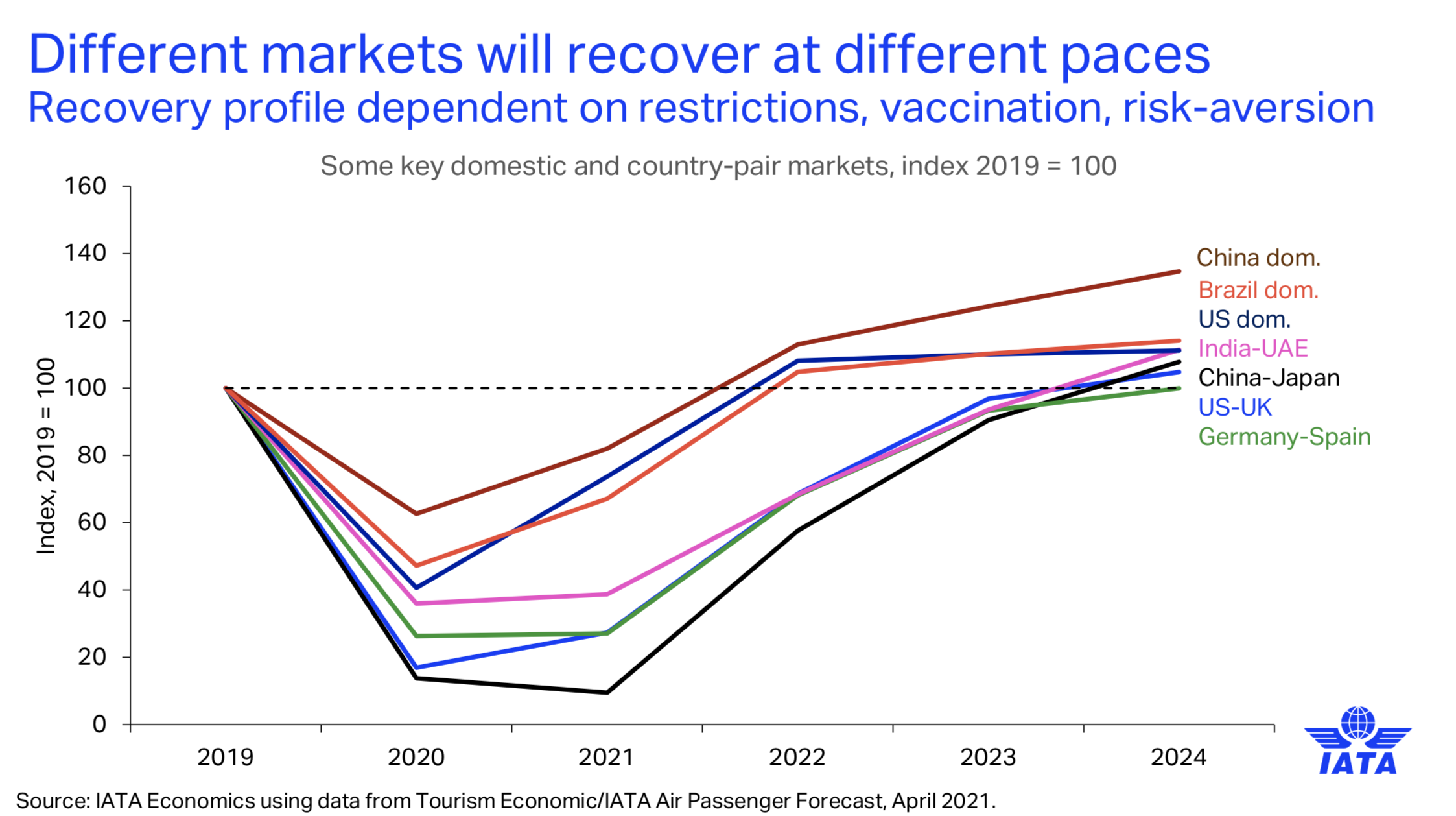
INTERNATIONAL. The International Air Transport Association (IATA) and Tourism Economics have shared a positive long-term view for post-COVID-19 passenger demand recovery which underlines the assertion that people remain eager to travel by air in the short and long term.
The highlights of their forecasts include:
- In 2021 global passenger numbers are expected to recover to 52% of pre-COVID-19 levels (2019).
- In 2022 global passenger numbers are expected to recover to 88% of pre-COVID-19 levels.
- In 2023 global passenger numbers are expected to surpass pre-COVID-19 levels (105%).
- By 2030 global passenger numbers are expected to have grown to 5.6 billion. That would be 7% below the pre-COVID-19 forecast and an estimated loss of 2-3 years of growth due to COVID-19.
- Beyond 2030 air travel is expected to slow due to weaker demographics and a baseline assumption of limited market liberalisation, giving average annual growth between 2019 and 2039 of 3.2%. IATA’s pre-COVID-19 growth forecast for this period was 3.8%.


IATA Director General Willie Walsh said: “I am always optimistic about aviation. We are in the deepest and gravest crisis in our history. But the rapidly growing vaccinated population and advancements in testing will return the freedom to fly in the months ahead. And when that happens, people are going to want to travel. The immediate challenge is to reopen borders, eliminate quarantine measures and digitally manage vaccination/testing certificates.”
On the latter subject mentioned by Walsh, IATA has warned of potential “airport chaos unless” governments move quickly to adopt digital processes to manage travel health credentials (COVID-19 testing and vaccine certificates) and other COVID-19 measures.

The global aviation trade body shared some key statistics which underline the on-airport time pressures that will be created unless such digital processes are advanced:
- Pre-COVID-19, passengers, on average, spent about 1.5 hours in travel processes for every journey (check-in, security, border control, customs and baggage claim).
- Current data indicates that airport processing times have ballooned to 3 hours during peak time with travel volumes at only about 30% of pre-COVID-19 levels. The greatest increases are at check-in and border control (emigration and immigration) where travel health credentials are being checked mainly as paper documents.
- Modelling suggests that, without process improvements, the time spent in airport processes could reach 5.5 hours per trip at 75% pre-COVID-19 traffic levels, and 8 hours per trip at 100% pre-COVID-19 traffic levels.
Walsh said: “Without an automated solution for COVID-19 checks, we can see the potential for significant airport disruptions on the horizon. Already, average passenger processing and waiting times have doubled from what they were pre-crisis during peak time – reaching an unacceptable three hours.
“And that is with many airports deploying pre-crisis level staffing for a small fraction of pre-crisis volumes. Nobody will tolerate waiting hours at check-in or for border formalities. We must automate the checking of vaccine and test certificates before traffic ramps up. The technical solutions exist. But governments must agree digital certificate standards and align processes to accept them. And they must act fast.”
View the COVID-19: An almost full recovery of air travel in prospect presentation by IATA Chief Economist Brian Pearce here.













